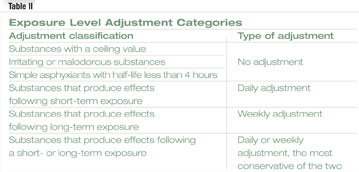MANAGING BEST PRACTICES: Switching to a 10-hour workday?

As energy and fuel costs rise, more employers are considering a 10-hour, four-day work week to replace the traditional 8-hour, five-day model. In both cases, there are 40 hours of weekly work. This article reviews key safety and health considerations if employees work a cost-saving10-hour, four-day schedule.
Fatigue
One of your first concerns: employees might become more fatigued, leading to symptoms such as sleepiness, irritability and depression.Actually, there is limited data to suggest a 10-hour work shift greatly increases the number of injuries. An extra couple of hours at daily work appear to be an insufficient time for many employees to become overly fatigued. An example of this rationale can be found in the Department of Transportation’s “hours of service” rule.
Commercial motor vehicle operators that carry passengers are limited to 10 hours of driving time before rest or off-duty time is mandated (if cargo is hauled, 11 hours is the maximum driving time).
But be aware that studies show working at least 12 hours a day increased injury rates by 37 percent. Injury rates also increase when employees work more than 40 hours a week.
Body burden
Most agents that may place an accumulated burden on the body (e.g. chemicals, noise, radiation, light, heat and cold, and ergonomic) have exposure limits based on the traditional 8-hour, 5-day, 50-week work year. This is the concept of the 8-hour time-weighted average (TWA) exposure commonly used by safety and health pros.When work periods are greater than the traditional time, exposure limits must be adjusted. A major exception is the NIOSH Recommended Exposure Level (REL). The REL is based on a 10-hour TWA.

OSHA
Lead and noise are the only OSHA standards that directly address adjustment in permissible exposure limit (PEL) or action level for work beyond eight hours a day. Table I summarizes adjustment requirements for a 10-hour work shift.The values shown are based on the following calculations: Lead PEL = 400/hours worked in the day. Noise Action Level (AL) = 90 + 16.61 log 50/12.5 x number of hours worked. As a reminder, the 8-hour PEL for lead is 50 ug/m3 and the 8-hour AL for noise is 85 dBA.
For a 10-hour work shift, OSHA will address chemical substances found in Subpart Z in the following manner: 1) Use exposure measurement for worst continuous 8-hour period; or 2) using multiple samples, determine exposure for worst 8 hours within the 10-hour period.
With the exception of the exposures above, OSHA has not established a formal position in regard to other hazards that extend beyond 8 hours.

Threshold limit values (TLVs)
TLVs® established by the American Conference of Governmental Industrial Hygienists also are based on the traditional work period of an 8-hour day, 5 days a week, 50 weeks a year. For work schedules different than this, ACGIH® advises that TLVs be interpreted and applied by a person trained in industrial hygiene. An IH may adjust the TLV, using various models, based on factors such as biological half-life and health impact of the agent.A Canadian model found at http://www.irsst.qc.ca/files/documents/PubIRSST/T-22.pdf has been recommended by the ACGIH for adjusting TLVs for chemical substances. The model defaults to permissible exposure limits by regulation in Quebec, Canada, but they match up fairly well to current TLVs. Table II shows this model’s adjustment categories.
Noise TLV
Be aware that the OSHA PEL for noise is based on a 5-decibel (dB) exchange rate, whereas the TLV for noise is based on a 3-dB exchange rate. There is a slight difference in calculations between the two limits. A 10-hour TLV for noise equates to 84 dBA, while an 8-hour TLV for noise is 85 dBA.Note in Table I that by regulation OSHA does not adjust its PEL for noise; it remains at 90 dBA. Aside from the regulation, a 10-hour PEL for noise (5-dB exchange rate) is calculated at 88.4 dBA.
Other adjustments
For all other adjustments, consult a trained IH. To learn more about adjusting exposure limits, visit http://www.cdc.gov/niosh/topics/workschedules/.Looking for a reprint of this article?
From high-res PDFs to custom plaques, order your copy today!






